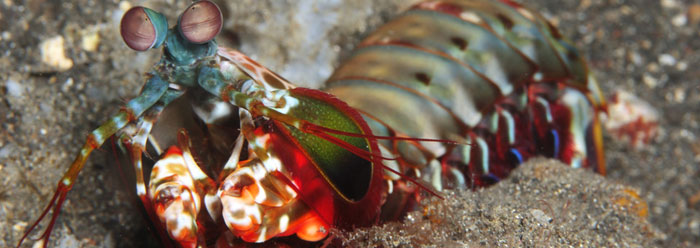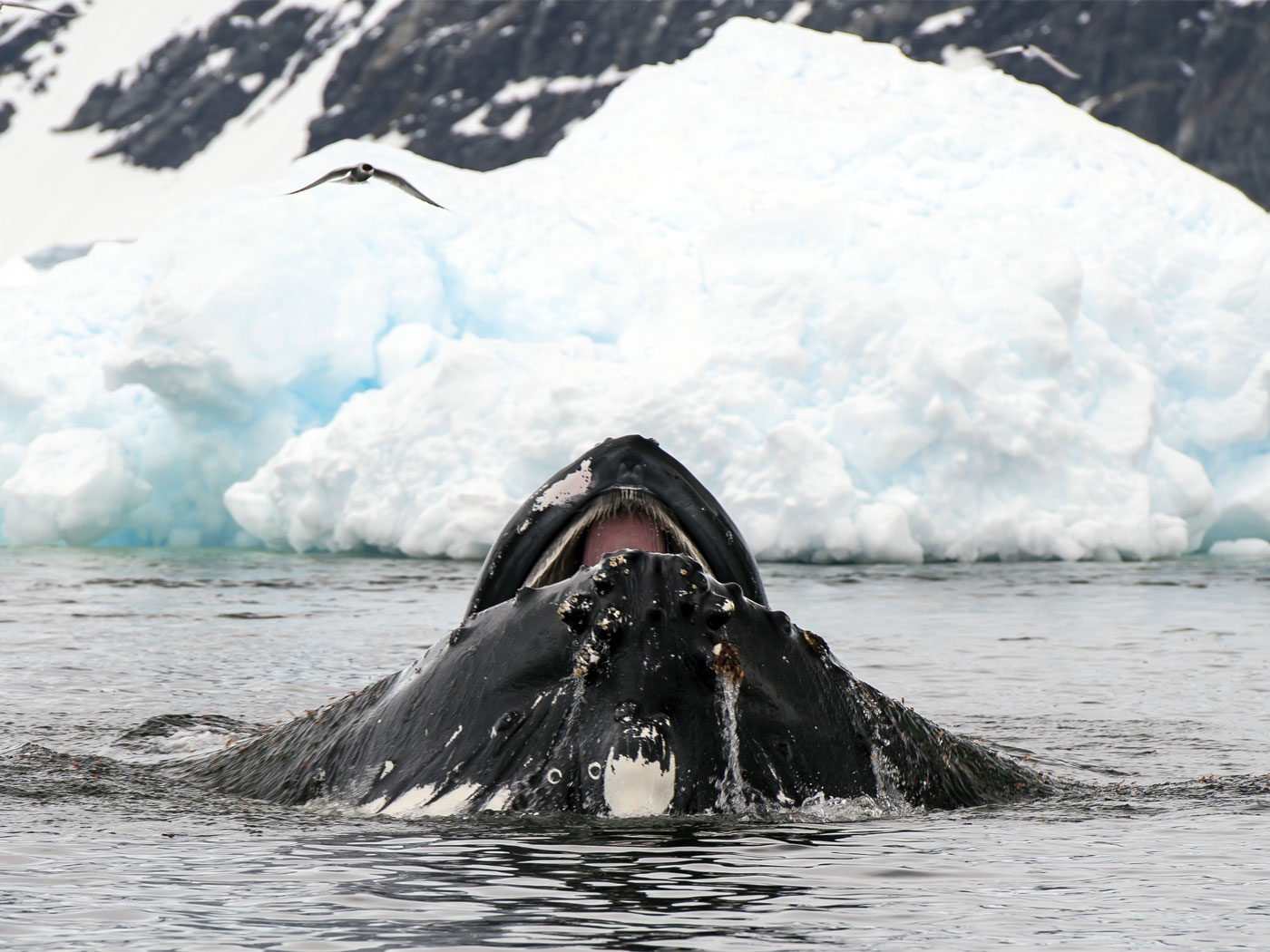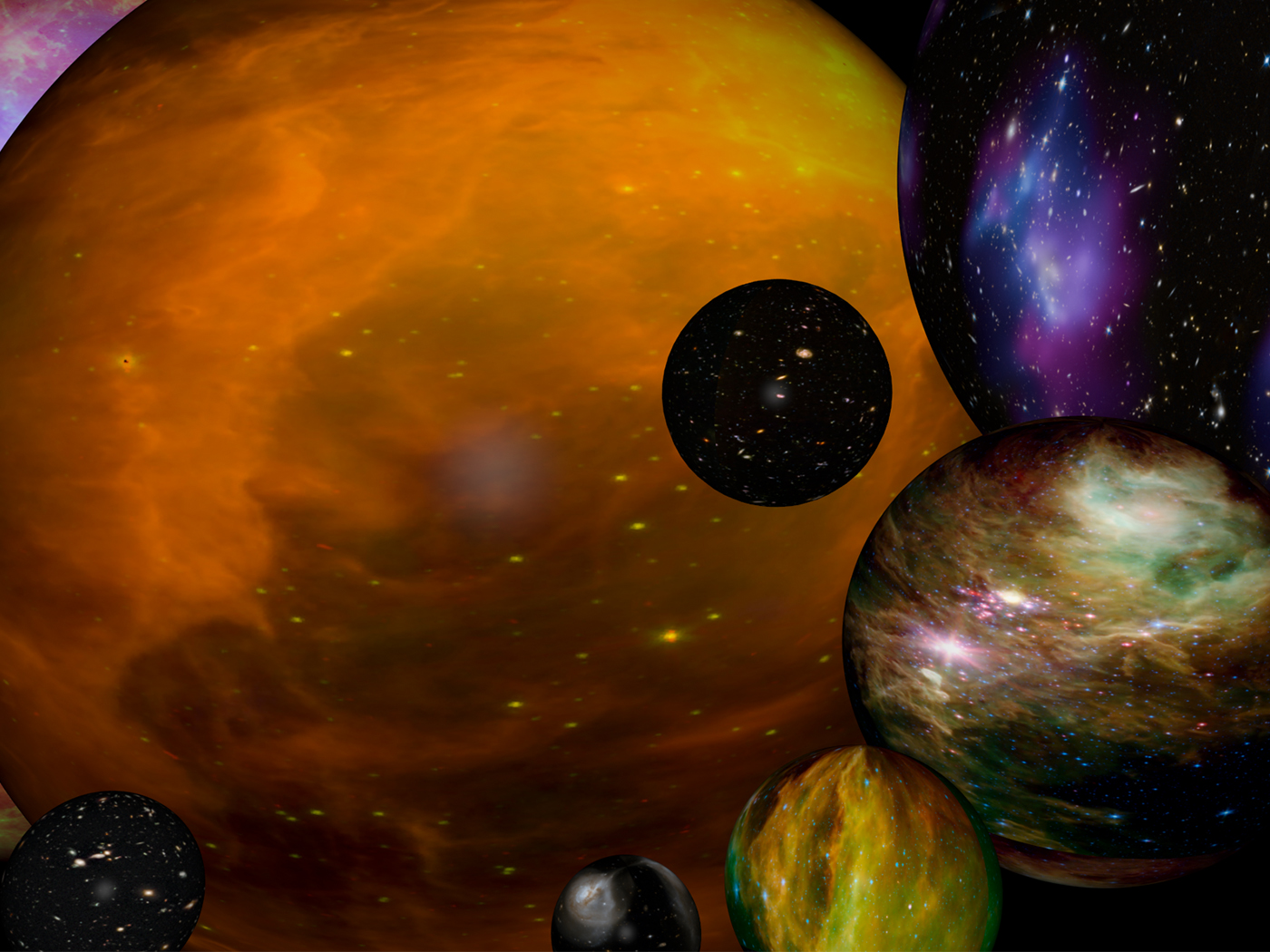Mantis shrimps are large, colorful marine creatures that see more colors than humans can. While humans see only three primary colors—blue, red, and green—the eyes of these shrimp detect twelve. Researchers who investigated the distinct biological machinery inside mantis shrimp eyes expressed confidence that their ocular mechanism could be partly replicated for use in an advanced generation of digital video players.
Today’s DVD players depend on a light detector that can only “see” one color. By copying the way these shrimp eyes work, perhaps information could be stacked in separate colors on DVD discs. In a study appearing in the journal Nature Photonics, researchers examined a kind of mantis shrimp found in the Great Barrier Reef of Australia and discovered that the mechanism in this creature’s eyes worked “much, much better than any attempts that we’ve made to construct a device” with light-reading ability.1
Not only do mantis shrimp see many more colors, but their eyes can detect light polarization, or the orientation of incoming light ray oscillations. The shrimps use “remarkable light-sensitive cells that rotate the plane of polarization in light as it travels through the eye,”1 a device technically referred to as “a full-visible-range achromatic quarter-wave retarder.”2
Despite all these amazingly complicated functions, the construction of mantis shrimp eyes appears “beautifully simple.”1 They may even be simple enough to replicate using liquid crystals. The scientists illustrated “how a novel interplay of intrinsic and form birefringence results in a natural achromatic optic that significantly outperforms current man-made optical devices.”2 Apparently, they found that the specific mantis shrimp eye materials and shapes are fine-tuned to receive high fidelity and wide-ranging optic inputs in a multifunctional and elegant design.
Many mantis shrimps can also control the colors on their own body surfaces. These displays are integral to their complicated communication strategies, which scientists do not yet understand. Mantis shrimp in aquariums reportedly are able to recognize specific people on sight. And these intriguing creatures have brightly visible signal patches stamped upon the saddle-shaped springs they use to operate specialized appendages that boast one of the fastest moving mechanisms in biology.3
The mantis shrimp is also one of many examples of “living fossils”―creatures that have not changed over supposedly vast evolutionary time spans. Some modern mantis shrimps are exactly the same as their ancestors that were fossilized in Devonian strata, which have been assigned an astounding age of 400 million years.4 The odds of this creature remaining unchanged for that length of time are fantastically remote.5 And the odds of nature having constructed the world’s most complicated eyes so soon after the “Cambrian Explosion” of life, only to have left them perfectly alone ever since, seems counter-evolutionary.
This research had little to say about the origin of the mantis shrimp eye, but it is clear that such high design demands a high designer. And while the stability of the mantis shrimp body plan, which is known by comparing fossils to living shrimp, does not fit with evolutionary time, it fits just fine in a young world.
While the source of mantis shrimps’ rarefied level of vision is unclear to evolutionists, other researchers, who are not convinced that nature is the only explanatory option for ultimate origins, suspect that the exquisite level of specificity, elegance, and effectiveness in the mantis shrimp vision system testifies to the unsurpassed level of the Creator’s genius.
References
- Hirschler, B. Shrimp’s eye points way to better DVDs. Reuters. Posted on reuters.com October 25, 2009, accessed October 28, 2009.
- Roberts, N. W. et al. 2009. A biological quarter-wave retarder with excellent achromaticity in the visible wavelength region. Nature Photonics. 3 (11): 641-644. Published online before print October 25, 2009.
- Patek, S. N., W. L. Korff, and R. L. Caldwell. 2004. Biomechanics: Deadly strike mechanism of a mantis shrimp. Nature. 428 (6985): 819-820. See also Shiela Patek clocks the fastest animals. TED. Posted on ted.com April, 2007, accessed October 28, 2009.
- Keim, B. What’s Old Is New: 12 Living Fossils. Wired Science. Posted on wired.com December 5, 2008, accessed October 28, 2009.
- For example, see Thomas, B. Why Are There Still Tuataras? ICR News. Posted on icr.org August 12, 2009, accessed October 28, 2009.
* Mr. Thomas is Science Writer at the Institute for Creation Research.
Article posted on November 4, 2009.

























